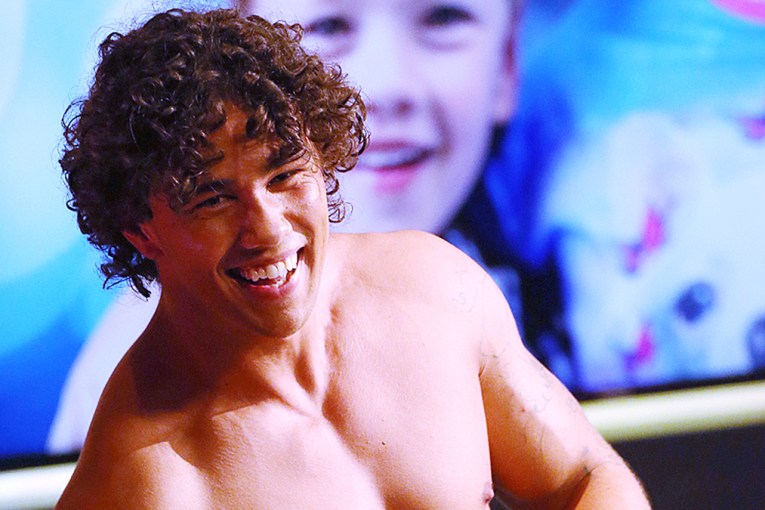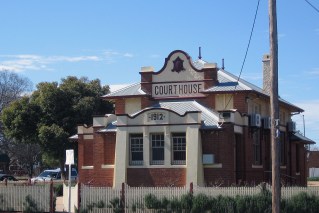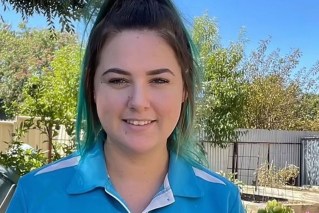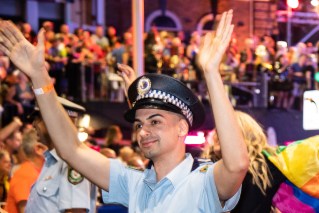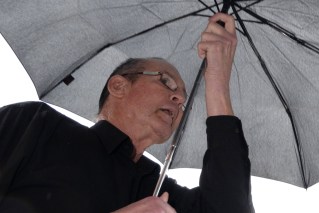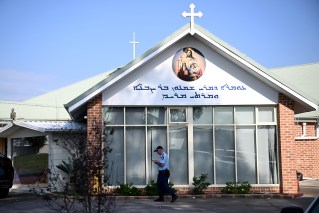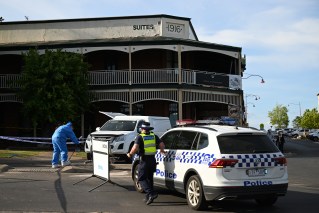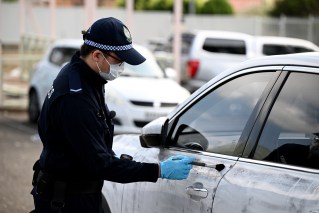Court hears graphic details of NZ mosque shooting as killer’s sentencing begins
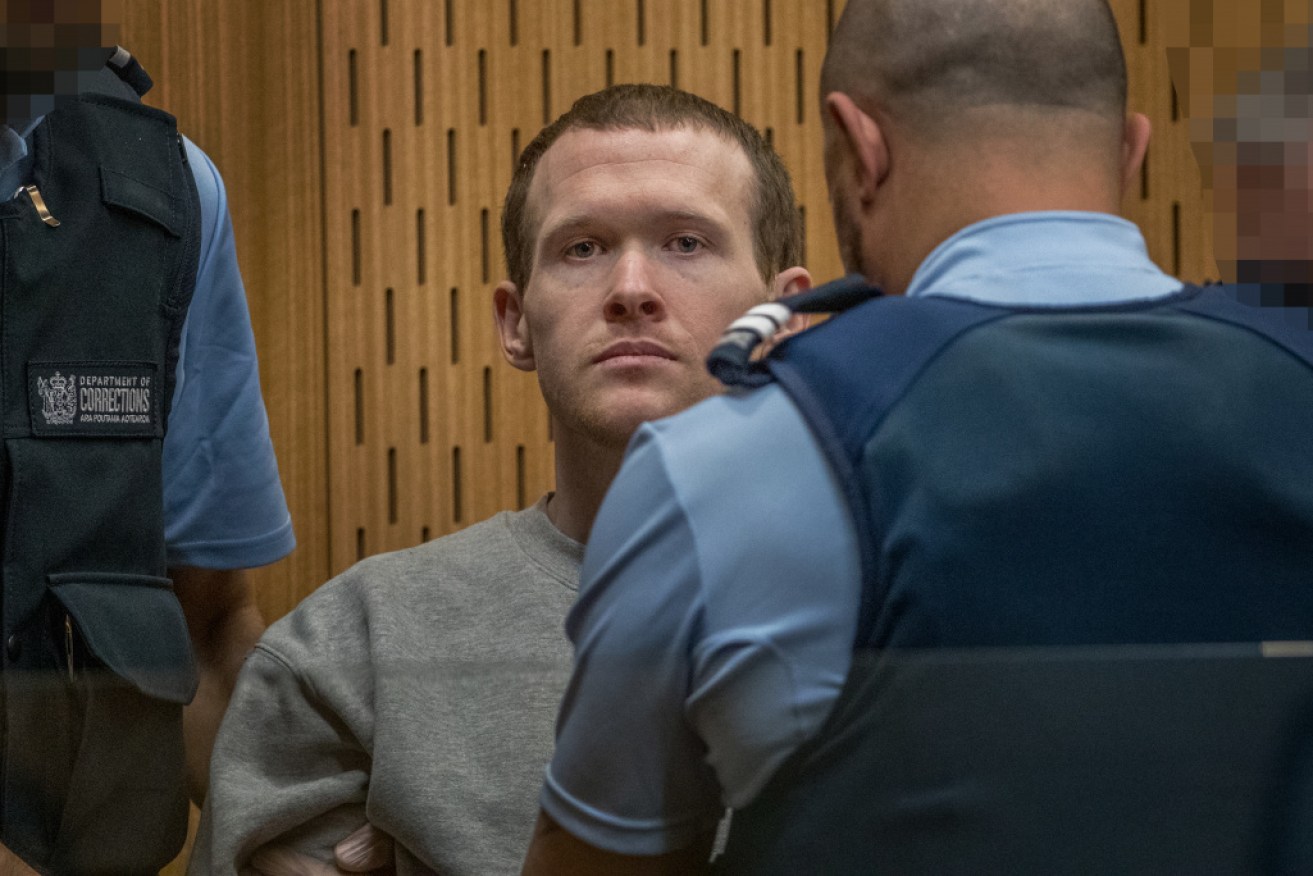
Brenton Tarrant abruptly changed his plea to guilty, before being sentenced to spend the rest of his life in jail. Photo: AAP
WARNING: THIS STORY CONTAINS GRAPHIC DETAILS
The High Court in Christchurch has heard in chilling detail how the Australian terrorist who carried out attacks on two mosques in March 2019 deliberately and methodically killed 51 people and injured 40 more because he wanted to reduce New Zealand’s immigration rates.
Brenton Harrison Tarrant, 29, sat impassively in the dock as Crown Prosecutor Barnaby Hawes opened the sentencing hearing by reading a blow-by-blow account of the crime, describing how Tarrant fired repeatedly and directly at men, women and children – including those already badly injured and crying out for help.
The court was told that immediately after the attacks, Tarrant told police his intention was “to kill as many people as he could” and burn each mosque to the ground.
“He intended to instil fear into those he described as invaders,” Mr Hawes said.
By invaders, Mr Hawes said the gunman was referring to anyone in the Muslim population, and non-Europeans.
“He said he wanted to directly reduce immigration rates by physically removing the invaders himself [and] create an atmosphere of fear and change,” he said.
“He said he wanted to have shot more people than he did.”
The court heard that after attacking two mosques – Al Noor and the Linwood Islamic Centre – the defendant was on his way to a third when he was intercepted and arrested.
Gunman fired at those attempting to flee and the injured
The court was taken through the killings in graphic detail.
They began when the Australian fired on four men who were on their way into Al Noor mosque as he entered the front gate.
Time and again, the court was told, he not only fired several rounds at those attempting to flee, but would then approach his victims and fire into them as they lay injured on the ground.
By the time Tarrant had walked down the corridor from the front entrance to the main prayer room, the court heard worshippers were piled in two corners near the only two exits from the room, desperately trying to get out.
The Australian fired 32 shots in quick succession into one group before turning towards the other group.
At this moment, the court heard of an act of bravery by one of the worshippers, Naeem Rashid, who “ran at the defendant” as his head was turning.
The father of three got within a metre of the gunman before he was shot.
Tarrant then shot him again at close range as his victim lay on his back “with his arms and knees up to his chest” in an attempt to protect himself.
Mr Hawes told the court “Mr Rashid’s actions allowed a number of other worshippers to escape”.
They included a 16-year-old boy, who managed to get out of the mosque, but was later shot dead by the gunman as he tried to hide from him.
Inside the mosque, the defendant – after retrieving more ammunition from his car – walked again to the piles of people, some of whom were already dead.
He took aim at those still moving, including “two precisely aimed shots” at a three-year-old boy who “was clinging to his father’s leg”.
The young boy died at the scene, the youngest of the terrorist’s victims.

A massacre victim is laid to rest in Christchurch.
Tarrant laughed and commentated during attacks
After leaving Al Noor mosque, Tarrant headed towards the site of the second attack – the Linwood Islamic Centre – taking aim at various people he assumed to be of Muslim faith on the way.
Mr Hawes said during this journey, “the defendant was talking and laughing about various aspects of what had happened in the form of commentary”.
After arriving at the Linwood centre, the defendant’s actions mirrored those at the Al Noor mosque.
He fired repeatedly at anyone who crossed his path, and then approached those already badly injured – including a cowering man who was “imploring him” not to shoot, and a woman lying prone on the ground.
There were also acts of bravery at Linwood, with one man running at him screaming and another picking up an abandoned weapon, which he threw at Tarrant’s car as he drove off, shattering a window.
During the attacks, the defendant switched on a GoPro camera, attached to a police-style helmet, which he used to livestream the atrocity.
He also activated a strobe light on his helmet “to cause confusion” as he approached worshippers.
In addition to several high-velocity weapons, he carried four modified petrol containers, which the court heard were intended to be used to set the mosques on fire following the shootings.
It is not clear why Tarrant did not follow through with that aspect of the plan. But the court heard that, in a police interview, he expressed regret at not having done so.

A man who escaped the shooting at the Masjid al Noor mosque.
Gunman carried out ‘reconnaissance’ mission with drone months earlier
Mr Hawes told the court Tarrant applied for a firearms licence in New Zealand in September 2017.
Between then and the crime a year-and-a-half later, he began amassing weapons – modifying them to make them more deadly, honing his shooting skills and hatching his plan.
The court heard that in January 2019 – two months before the March 15 killings – he drove to Christchurch on a “reconnaissance” mission.
He parked directly across from Al Noor mosque and used a drone to scope out the building on Deans Avenue, including flying back over to specifically scope out the entry and exit doors.
Mr Hawes told the court the Australian “made detailed notes” about the mosque “to ensure the maximum number of worshippers would be present” when he carried out the crime.
Then on March 15, 2019, Tarrant left the home he rented in Dunedin and drove to Christchurch, on what was to become, in Prime Minister Jacinda Ardern’s words, one of New Zealand’s “darkest days”.
Ahead of the killings, the court heard Tarrant sent a manifesto he had written, entitled The Great Replacement, to the New Zealand parliamentary offices, to an extremist website, and to media organisations.
The court also heard he communicated with his family, giving them suggestions on how to deal with police and media following the killings.

Gamal Fouda at the ceremony to mark a year since the terror attack on his mosque.
Victim tells gunman ‘we did not deserve your actions’
During the course of the four-day sentencing, the court will hear victim impact statements from more than 60 people, some of whom are directly addressing the defendant.
The imam of Al Noor mosque, Gamal Fouda, 45 – who was the first to speak – told the court he would never forget seeing “the hatred of a brainwashed terrorist”.
“I would like to say to the terrorist, you were misguided and misled,” Mr Fouda said.
“We are a peaceful and loving community, we did not deserve your actions … if you have done anything you have brought the whole community closer with your evil actions.”
The imam also spoke directly to the gunman’s Australian family, and Australia as a whole.
“I can say to the family of the terrorist that they have lost a son and we have lost many from within our community too, I respect them as they are suffering as we are,” he said.
“Australia is our neighbour and we are all one against hate and racism.”
-ABC
